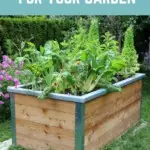
Creating raised beds for your garden can be a wonderful way to create new growing areas for food or for flowers. But not all raised beds were created equal.
When you are thinking about creating new raised beds, it is important to consider your options carefully, to find the solutions for edging, shape and size that are right for you.
To help you determine the best options for your garden, here are 45 of the best DIY raised bed ideas that you could try:
Raised Bed Types:
First of all, let’s begin by taking a look at the different types of raised bed that you can create. You don’t just have to make or choose a container and fill it with soil and compost. Here are some cool raised bed solutions that you could consider.
1. ‘Lasagna’ Beds
The lasagna bed method is an easy way to build up raised planting areas in your garden, in a soil-friendly and eco-conscious way.
Rather than making compost elsewhere in your garden and porting it into your raised bed areas, you can simply build up layers in your new growing area and let the materials compost in place.
Lasgana Beds @ Instructabes.com
2. Square Foot Gardens
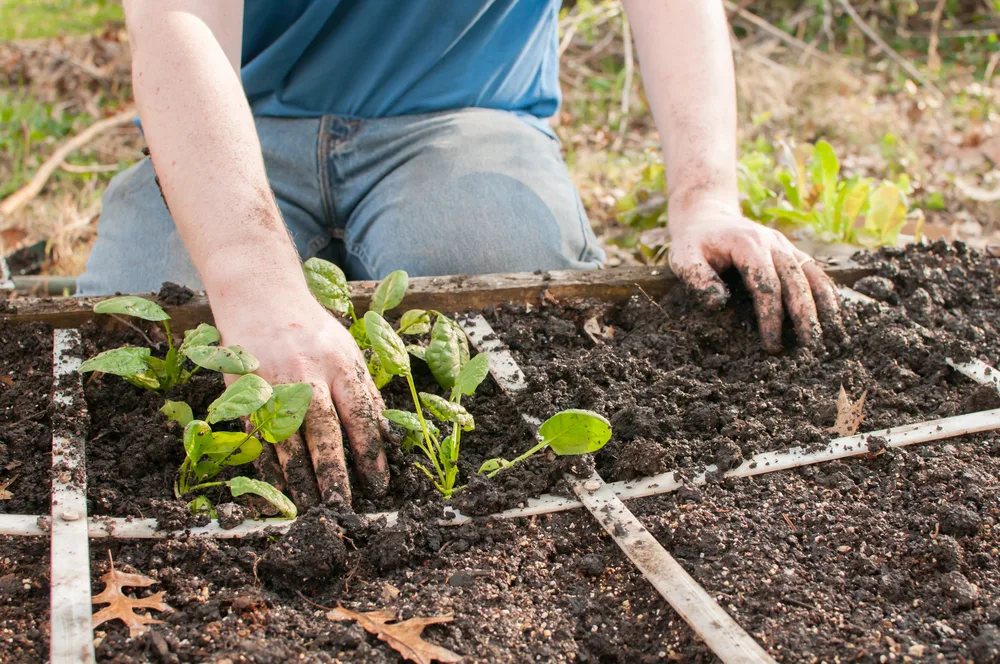
No matter what you use to build up the growing medium in your raised beds, you might like to consider using the square foot gardening method,or an adaptation thereof.
This method is one that allows you to maximize your yield in your raised bed growing areas.
Square Foot Gardens @ RuralSprout.com
3. Hügelkultur Beds
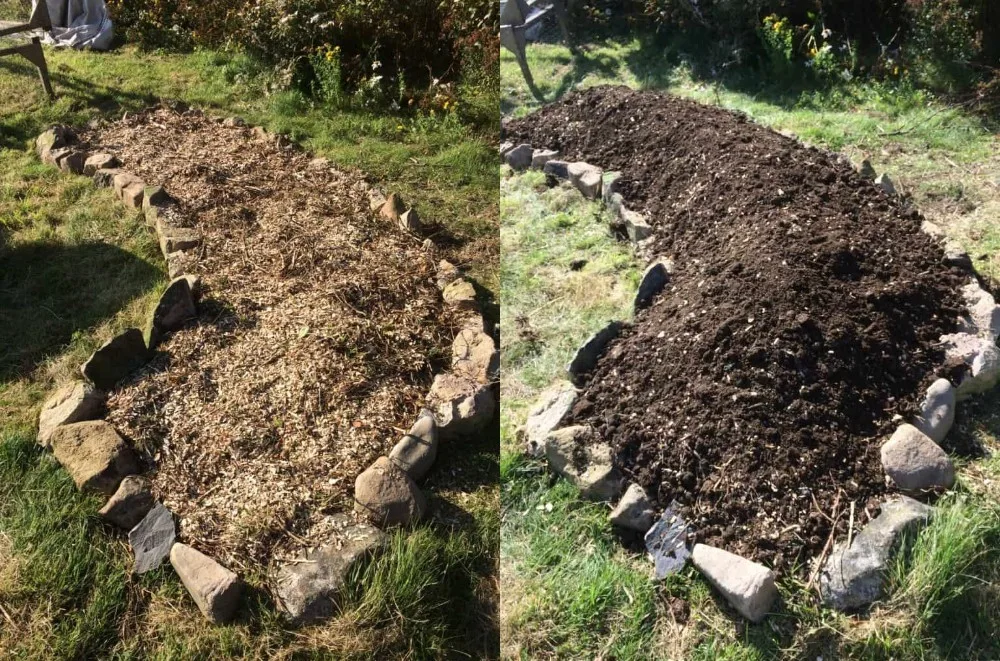
Hugelkultur is the practice of creating mounds of rotting wood and other organic matter that create an ideal environment to grow a range of crops.
You might create huge mounds and landscape your whole garden. But you can also use the principles to make small-scale raised beds.
Building A Hügelkultur Raised Bed @ ruralsprout.com
4. Straw Bale Gardens
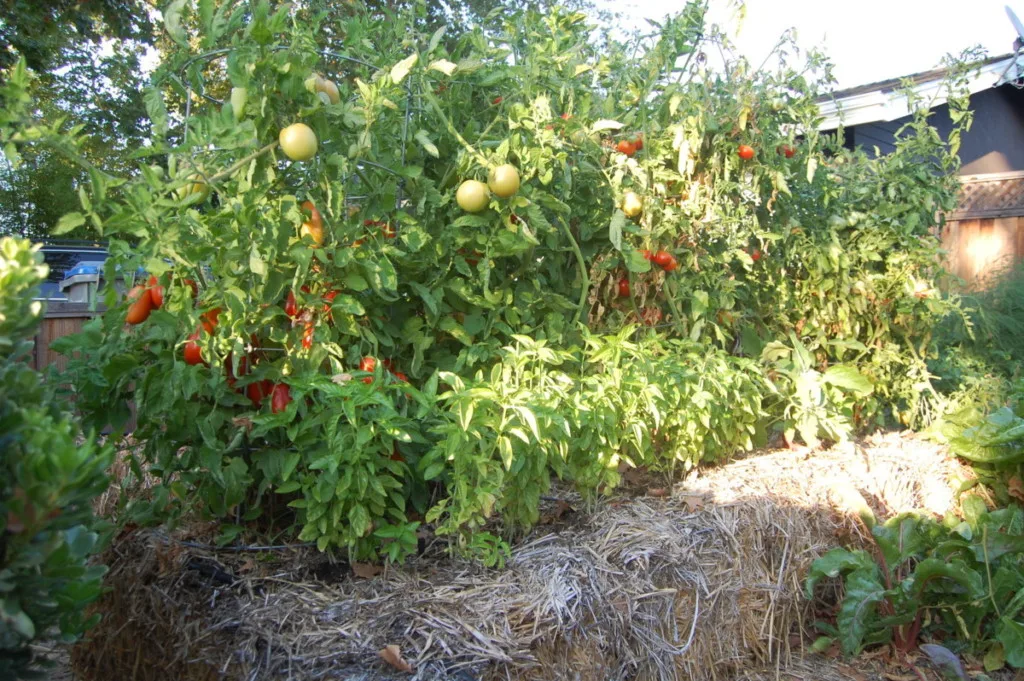
A straw bale can be used as the ‘filling’ or structure for a raised bed.
These raised beds are very easy to make and, if straw is an agricultural by-product where you live, won’t break the bank.
In a straw bale garden, plants get nutrients as the straw, fed with a nitrogen rich feed, begins to break down.
Straw Bale Gardening @ ruralsprout.com
5. Hot Beds
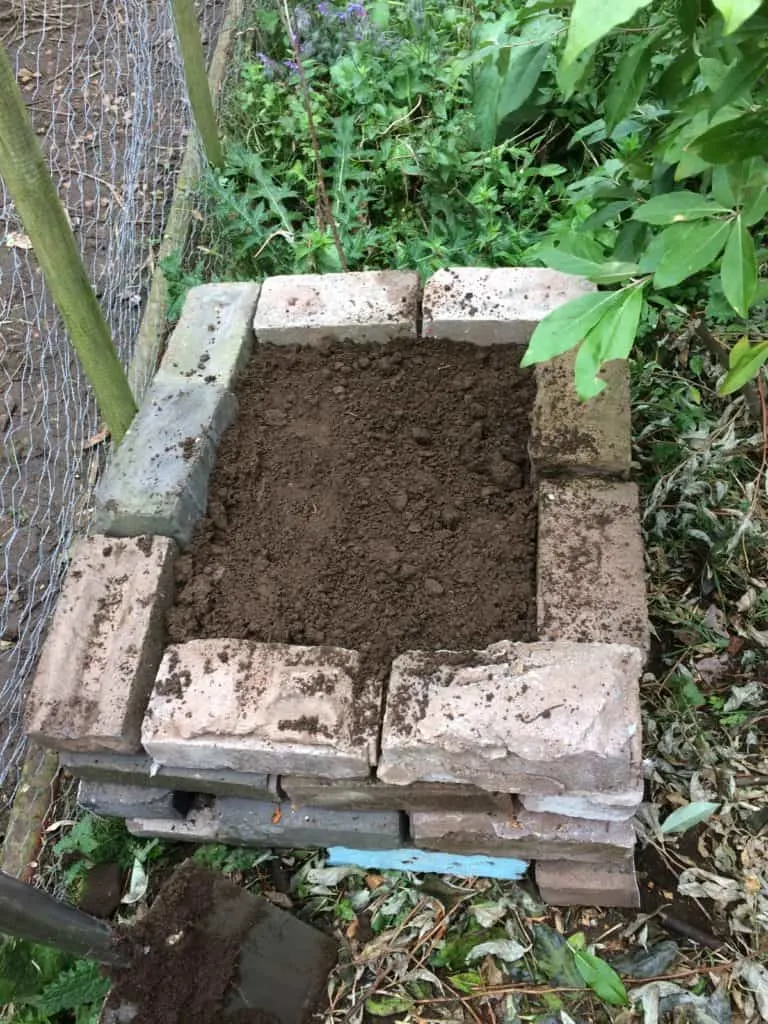
A ‘hot bed’ is a raised bed that is filled with organic materials like straw and manure that will give off heat as they decompose.
They can be wonderful undercover in a polytunnel or greenhouse, or outside in your garden, and will increase the length of your growing season.
How I Built A Hotbed To Grow Food Through Winter @ ruralsprout.com
6. Wicking Beds
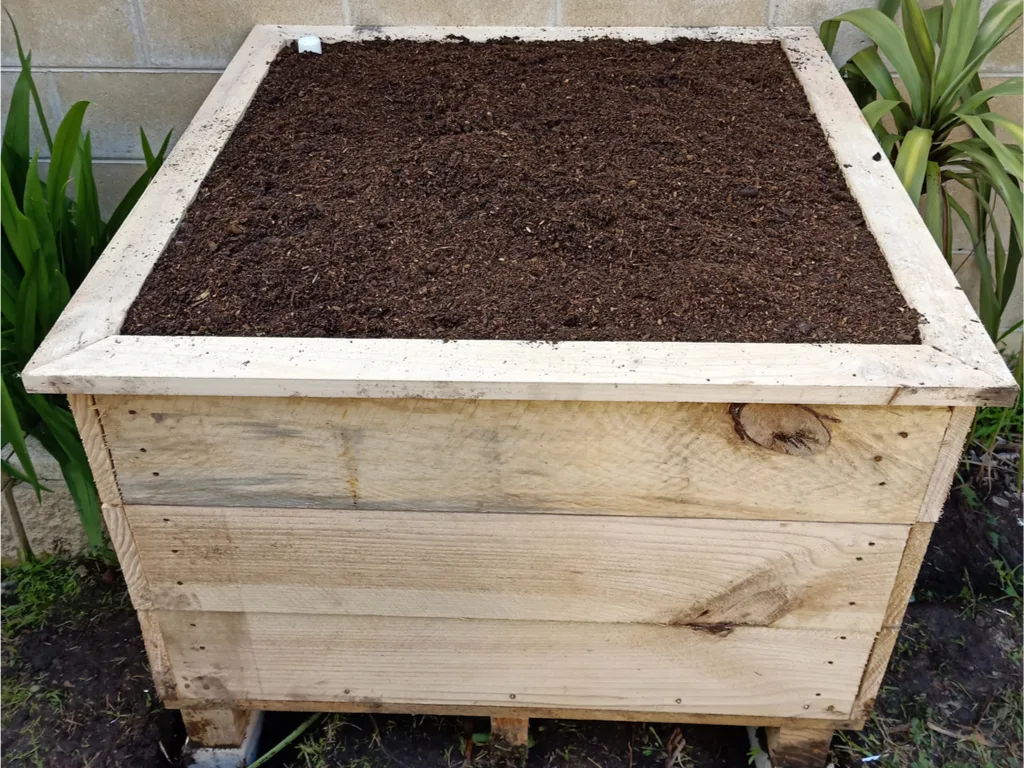
Wicking beds are traditional raised beds filled with dirt that sit on top of a reservoir of water.
The water wicks up through the raised bed creating a self-watering system.
The reservoir could be connected to a hydroponic or aquaponic system, or simply be fed from the downspout collecting the rainwater from your roof.
Wicking Bed Construction @ deepgreenpermaculture.com
Raised Bed Shapes:
Now we’ve taken a look at some excellent raised bed concepts, lets take a look at the different shapes that raised beds can take.
Shape is important because it can set the tone for your whole garden.
It can also allow you to maximise edge – the most diverse and abundant part of an ecosystem, and optimise your garden to grow as much as possible.
Whether you are growing edibles or ornamentals, or both, here are some raised bed shape ideas that you might want to consider.
7. Simple Rectangles or Squares
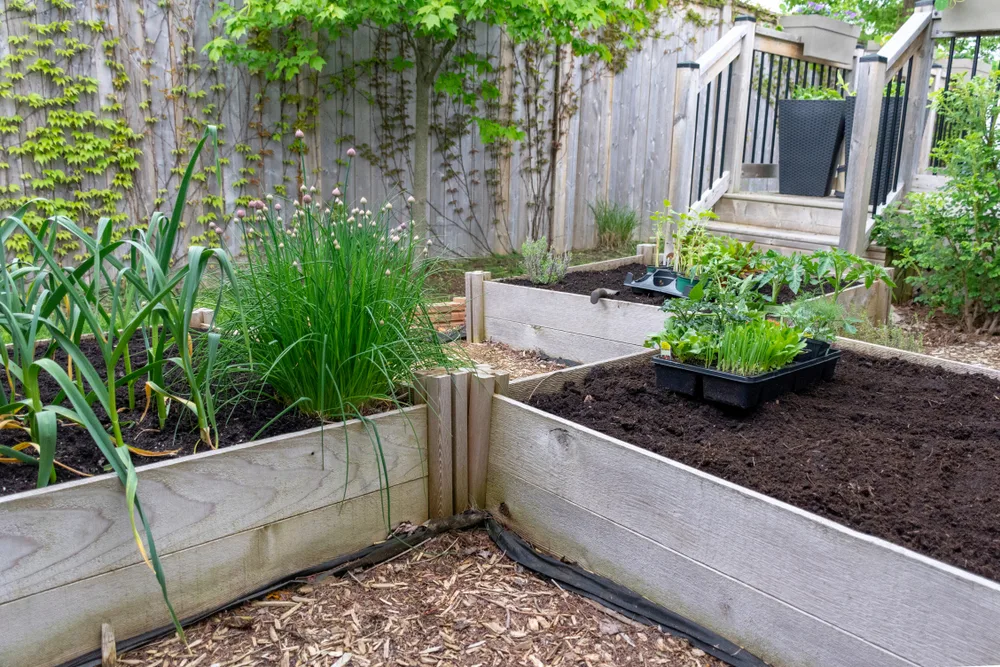
It does not matter what they are made of, the most common and popular shapes for raised beds is rectangular, or square.
Later in this article you will find lots of inspiration to help you decide what to make your raised beds from. But for now, lets stick to their shape.
Having plenty of small rectangular or square beds can allow you to fit a lot into your garden, and one can be placed in even the smallest of spaces.
One simple example can be found through the link below.
Build a raised vegetable bed @ gardenersworld.com
8. Multi-Level Raised Beds
Even if beds are rather plain and boring rectangles, you can still consider adding a bit more interest by creating multi-level raised beds.
Not only will such beds look interesting, they could also create a range of different habitats for different plants.
Mutil-level raised bed @ raiseyourgarden.com
9. Tiered Raised Beds
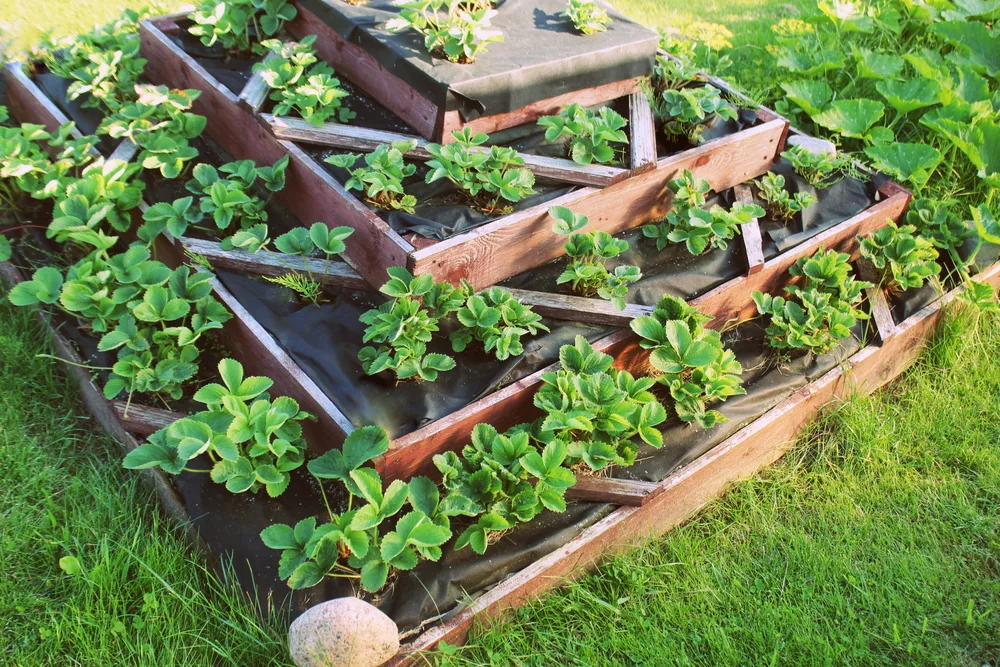
A variation on the theme is to create a tiered, pyramid-like raised bed structure, with planting areas at different levels rising to a peak at the top.
These could also be constructed from a range of different materials, and in a range of different sizes and styles to suit almost any garden.
How to build a killer pyramid raised garden bed @ housely.com
10. Mandala Gardens
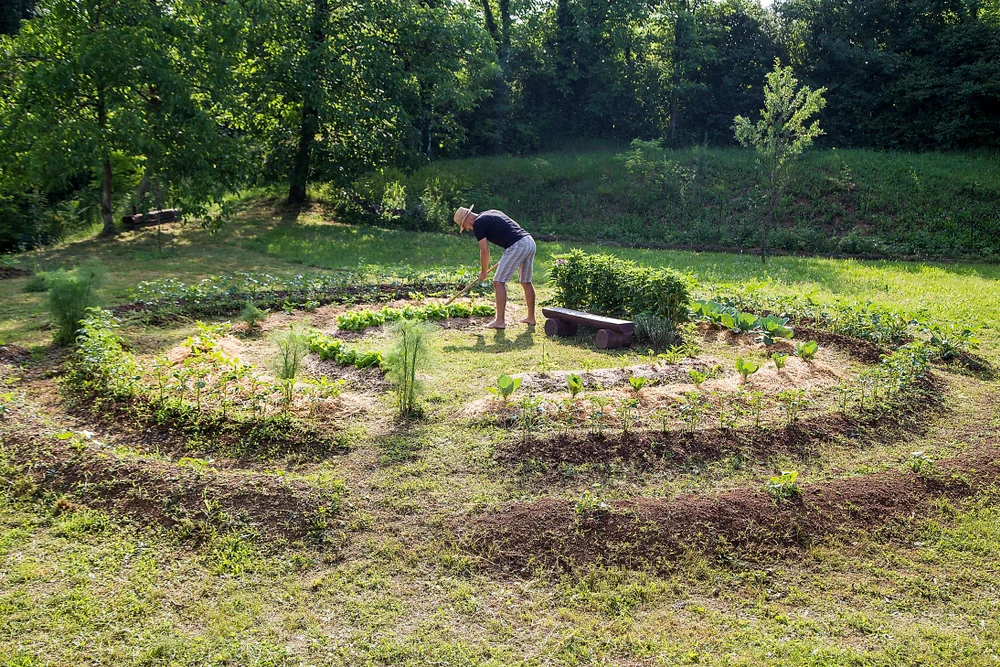
Mandala gardens are beautiful gardens with raised beds in circular form.
There are popular in permaculture and organic gardening circles, and can be a way to make your garden truly magical and out of the ordinary.
There are many different designs for mandala gardens with raised beds that you could follow.
Mandala Garden Beds @ onegreenplanet.org
11. Keyhole Gardens
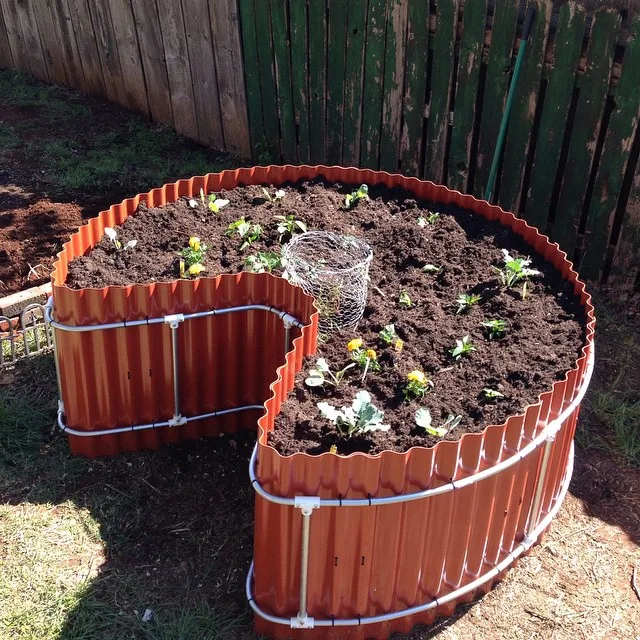
Related to the mandala garden is the concept of a keyhole garden. Larger raised beds using this idea have a keyhole shaped access way that allows you to easily reach all parts of the growing area.
A garden bed can have one keyhole access, or more than one. It can also be in a circular shape, rectangular, or, in fact, almost any shape at all.
How To Build A Keyhole Raised Bed @ Rural Sprout
12. Spiral Form Raised Beds
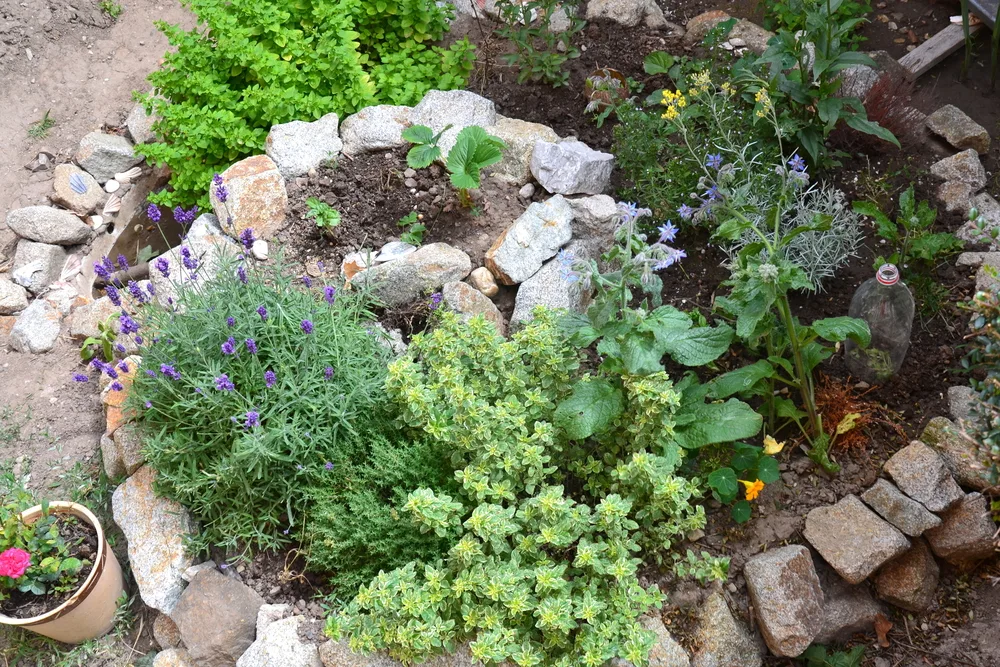
Spirals are another popular idea in permaculture and in many organic gardens.
Often, you will see this type of raised beds used to grow herbs.
A herb spiral is a wonderful way to create the suitable environment for a wide range of herbs (or other plants) in a relatively small space.
How to make a herb spiral @ seedtopantryschool.com
13. Organically Shaped, Curving Raised Beds
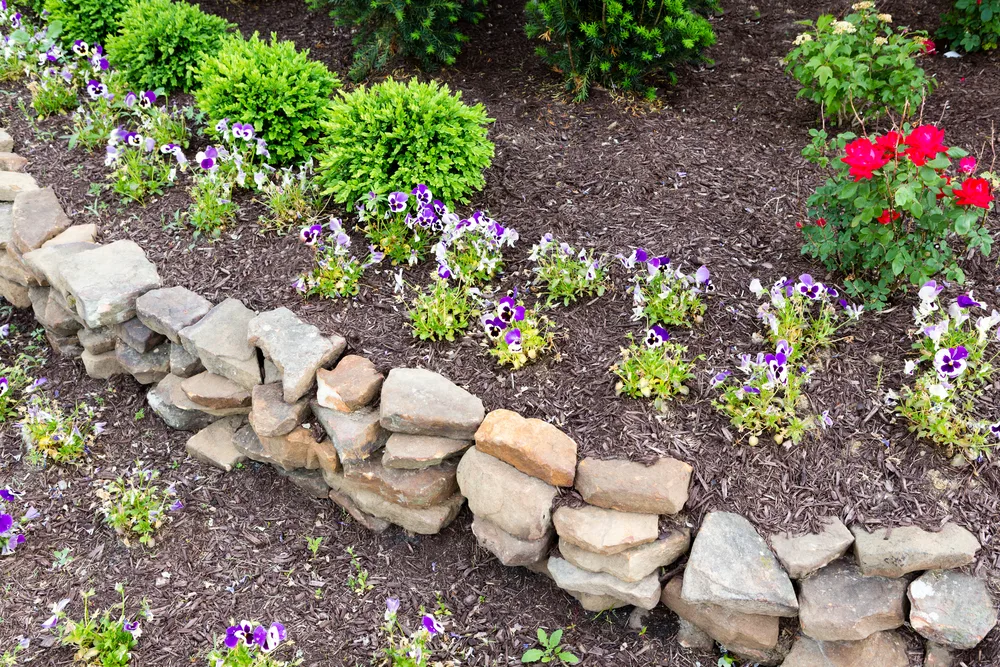
It really does pay to think outside the box when it comes to creating your raised beds.
You can move far beyond a simple square or circular form to define the spaces in your garden and create sinuous, organic lines.
You can use many of the materials described below to do so, but instructions for building curved raised beds from wood can be found through the link below.
Curved wood planters @ homeguides.sfgate.com
Raised Bed Materials:
In addition to thinking about concepts for raised beds, and raised bed shape, you will also obviously have to decide what you will use to construct the edges of your raised beds (if they have any).
There are a hue range of ideas that you could try. Some of the best ideas are listed below:
14. Simple Wooden Raised Beds
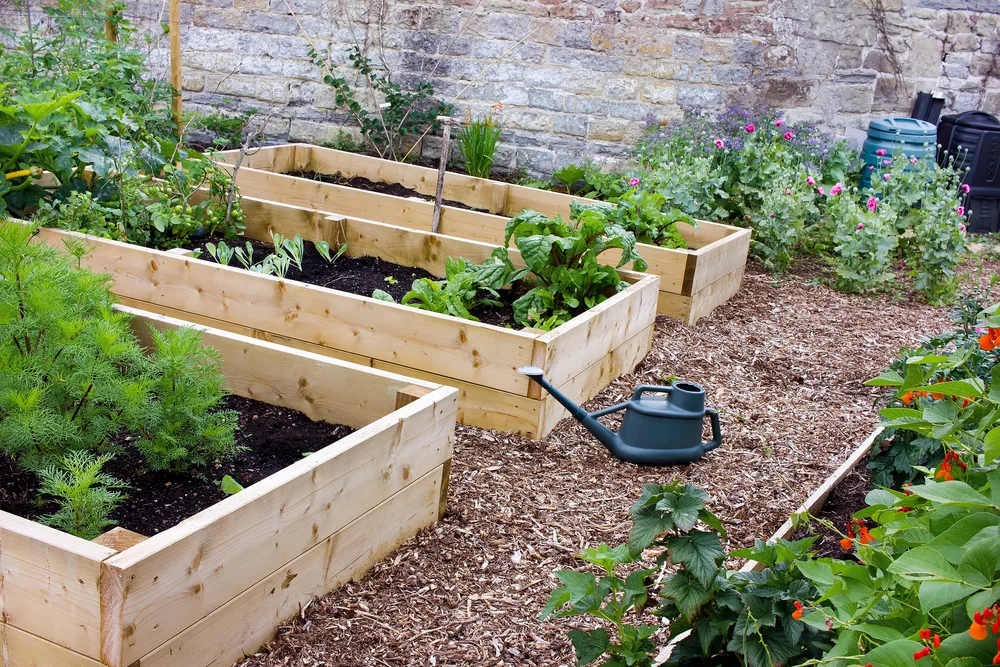
One of the most versatile and popular options for a raised bed is a simple structure with wooden sides.
There are plenty of plans to choose from to make your own. You’ll find one example by following the link below.
Simple raised bed @ goodhousekeeping.com
15. Reclaimed Timber Raised Bed
Of course, one way to go greener in your garden is to choose to use reclaimed materials.
There are plenty of imaginative ways to use reclaimed timber to make raised beds – as in the example below, which uses an old wood pallet.
Just make sure that the wood has not been treated or exposed to harmful materials.
Garden planter made from a pallet @ removeandreplace.com
16. Railway Sleepers Raised Bed
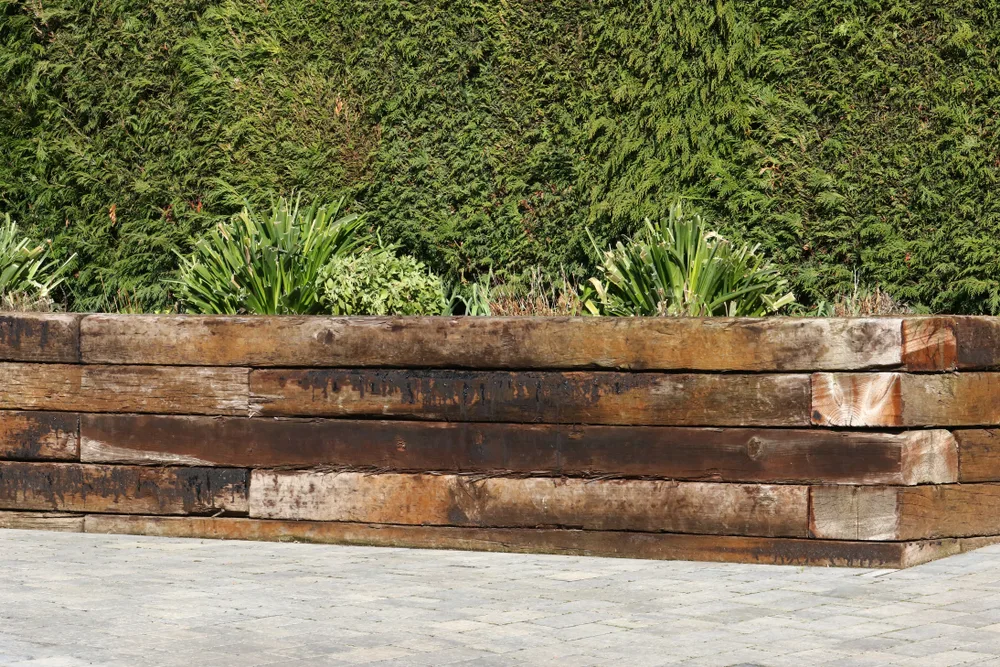
Railway sleepers are a type of wood that can look particularly attractive in the garden.
A number of companies and reclamation yards sell untreated railway sleepers that you can safely use around your food.
To be as eco-friendly as possible, always make sure that the wood you use for your raised beds comes from sustainable forestry.
How to build a raised bed with railway sleepers @ railwaysleepers.com
17. Vertical Logs Raised Bed
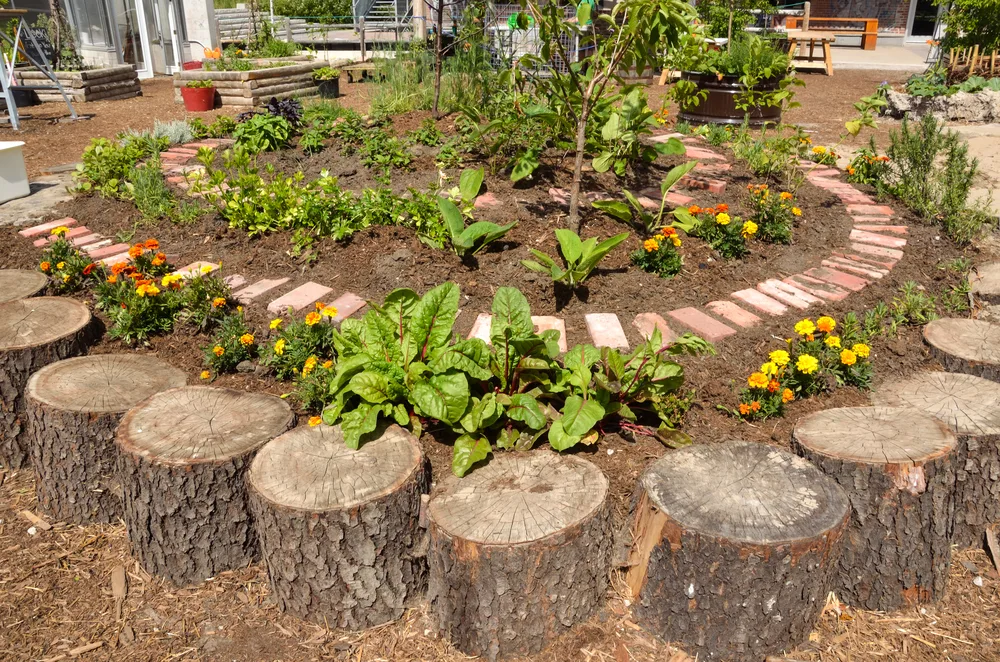
You don’t necessarily even have to go out and buy timber to make the edges of your raised beds.
You might be able to source materials from your own land -or from friends or neighbours. Logs are one resource that can often be widely available.
Placing these logs vertically, in the ground, is one way to make attractive bed edges.
DIY tree log ideas @ ideastand.com
18. Horizontal Logs Raised Bed
Of course, you could also use the logs horizontally to make your raised beds.
There are plenty of basic and more complex designs you could use.
You could simply place logs for a rustic effect, or build your raised beds like the walls of a log cabin. One simpler example can be seen below.
Log Raised Beds @ practicalselfreliance.com
19. Woven Willow Raised Bed
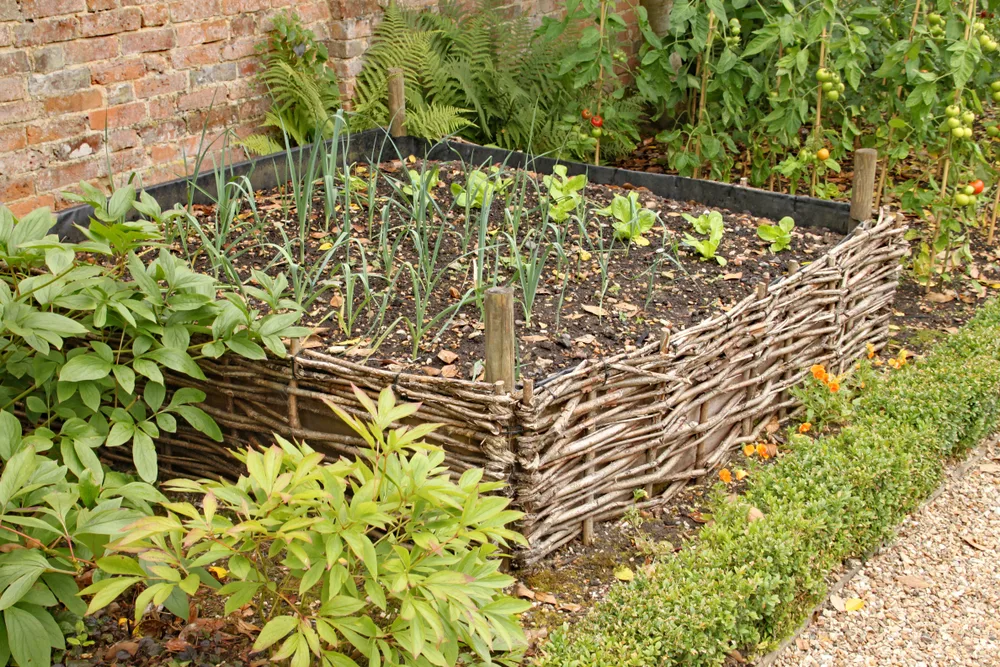
Woven willow raised beds are perfect for a country style or kitchen garden.
The woven effect of the willow makes beds and planters look charming and delicate.
And if you grow willow in your garden, this might even be an entirely free solution for your raised beds.
Weave your own elevated flower bed @ instructables.com
20. Wattle Branch Garden Edging
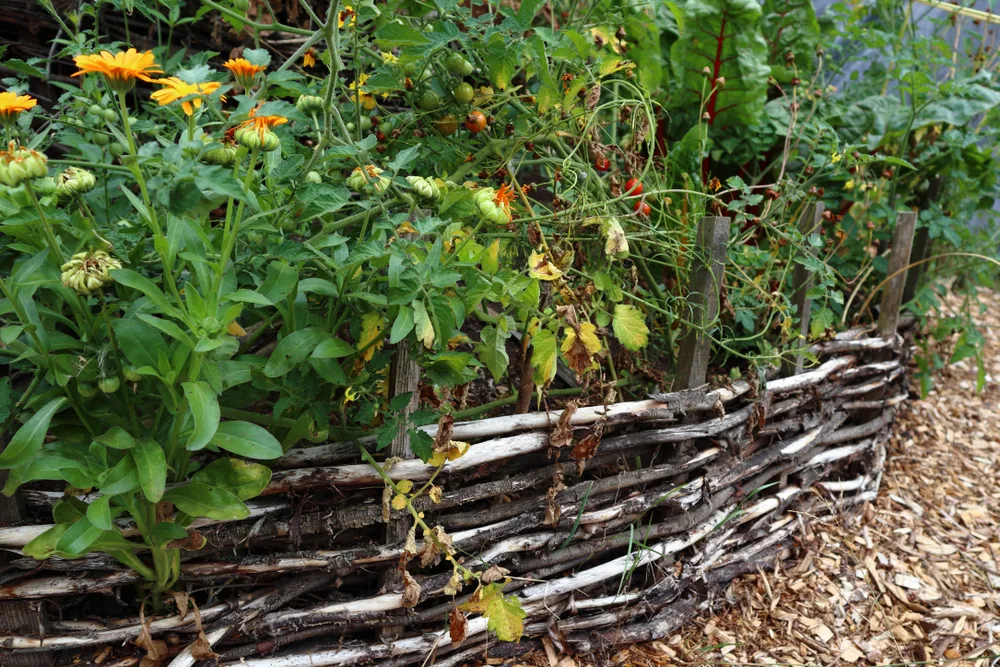
Willow branches are not the only branches that you could use to make raised beds.
You can use almost any thin branches, woven between stakes, to create wattle edging for your raised beds.
Hazel wattle is one popular option, for example. Edging can be made as tall and sturdy as you want.
Wattle woven raised bed @ thisdomesticlifeblog.com
21. Brush & Branches Raised Bed
If all that weaving seems like a little too much work, why not simply make a ‘nest’ to contain the materials of your raised bed?
Brush and branches piled around the edges of your bed can have a wonderfully wild look, and this is a super quick way to create a raised bed and get started on planting up your garden.
Brush and branches raised bed @ greenidiom.com
22. Bamboo Raised Bed
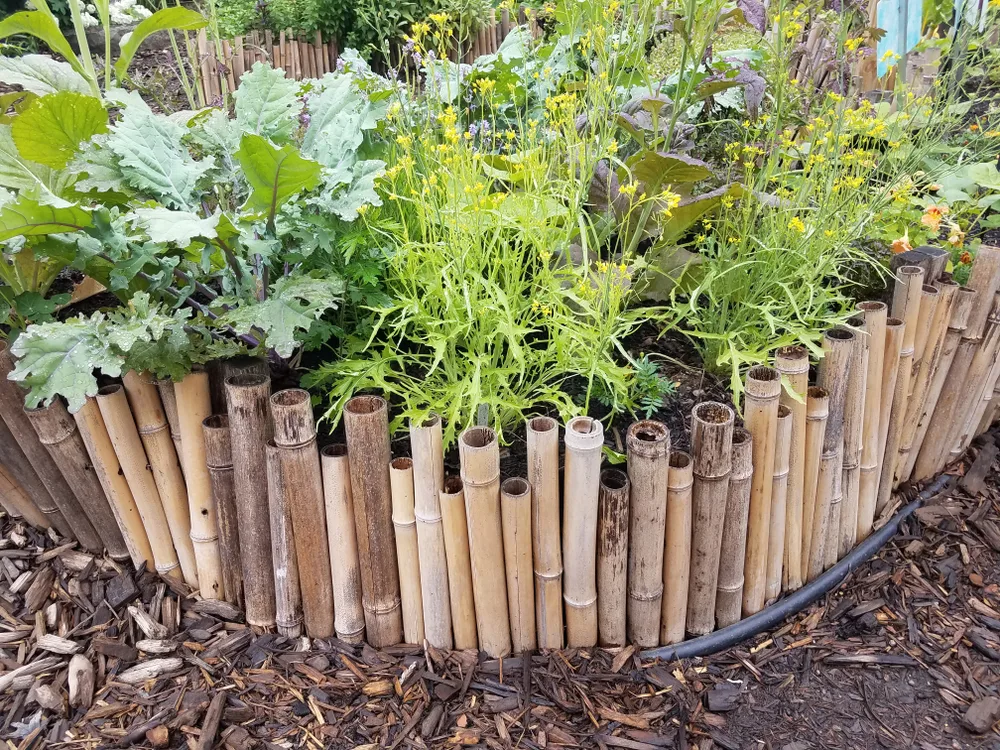
Bamboo is another excellent material to use for the edges of your raised bed.
Again, this might be something you can grow in your very own garden, so could be sourced entirely for free.
You could use thin canes, or thicker ones, depending on the effect you are going for.
Bamboo raised bed @ thehippiehomestead.blogspot.com
23. Dry Stone Garden
In some gardens, rocks and stones might be a plentiful resource. If you have rocky soil, you could turn this to your advantage by using rocks and stones from the land to make the edges of your raised beds.
Stone is great at retaining heat, and the crevices in a dry stone wall will make great habitat for creepy crawlies – making your garden more wildlife friendly.
Meandering stone raised beds @ seattleurbanfarmco.com
24. River Rock Raised Bed
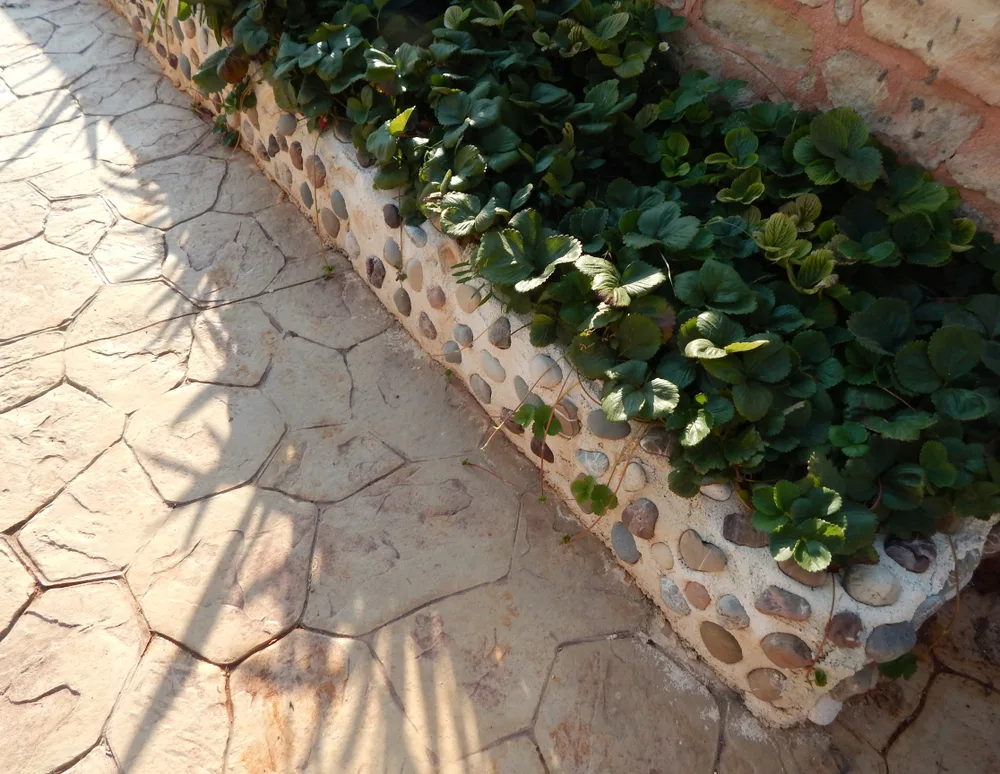
Local river rocks might also be used to edge raised areas of your garden, for an organic and natural look.
Smooth river rocks create a calming feel and, again, will add thermal mass to keep your plants warm.
Gaps between the smooth rocks could also be planted up with companion plants to attract pollinators etc..
25. Mortared Stone Growing Area
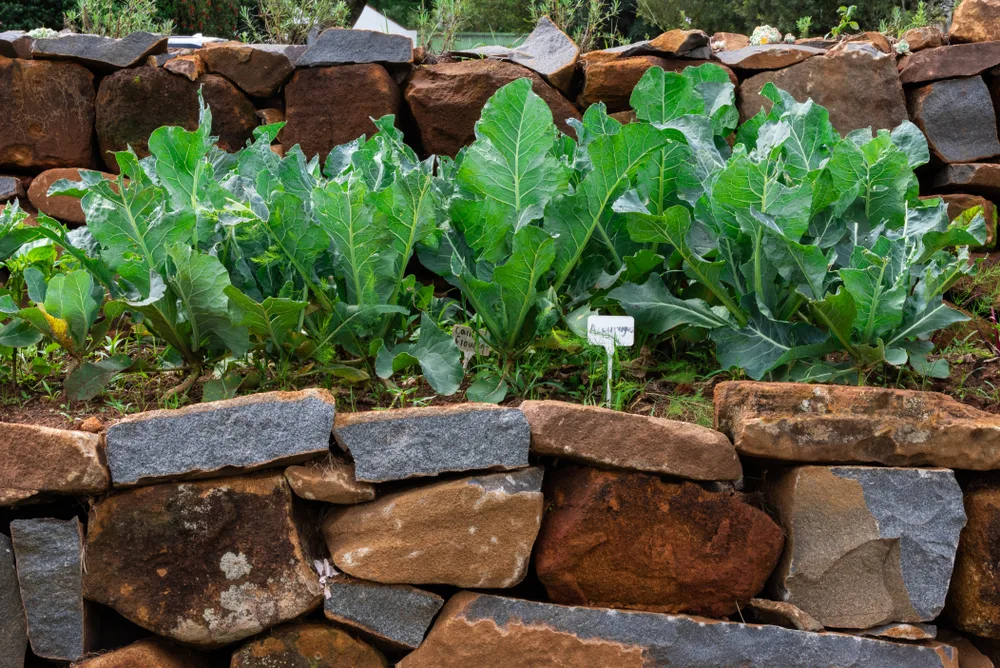
If you want to create a more permanent, sturdy and enduring raised bed or raising growing area, mortared stone walls might be a good solution.
These are perfect for areas where larger quantities of soil/ growing medium have to be retained, or on slopes.
How to build a stone wall @ diy.com
26. Clay/Lime Rendered Raised Bed
Whether you make your raised beds of stone, cob, earth bags or other materials, rendering the outside of the beds edges with a clay-lime render can alter the appearance and create a different effect.
(Colored renders could also help to tie the raised bed into the colour scheme of your garden.)
Earth bag raised bed @ earthbagbuilding.com
27. Straw Bale Edged Garden
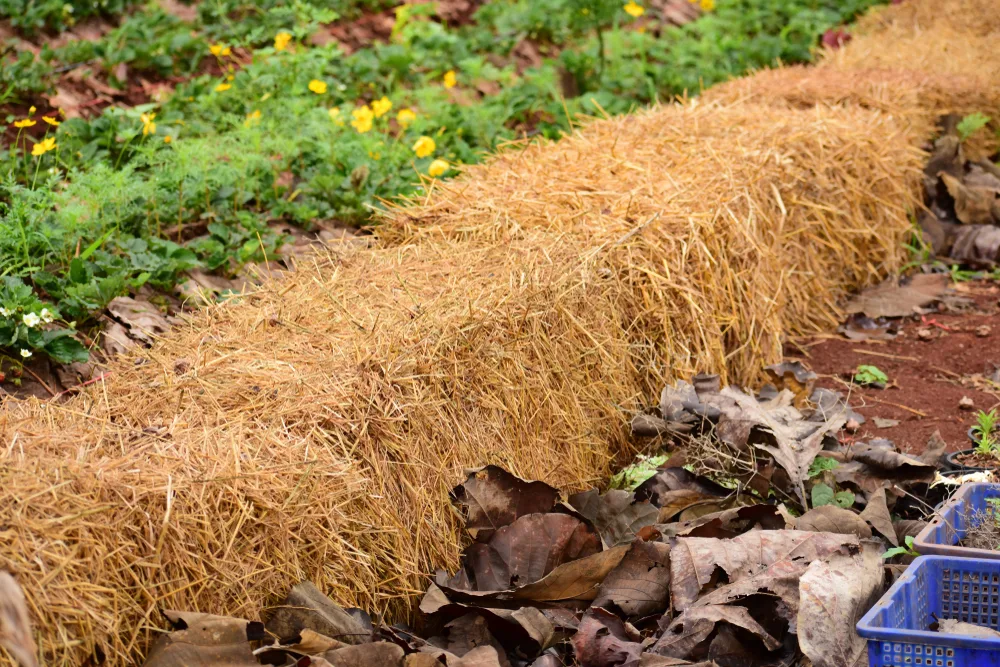
Even if you do not want to grow actually on top of straw bales, you could still consider simply making the edges of your raised beds with straw bales.
These can make a comfy place to sit while you garden.
DIY Straw Bale Raised Garden Bed @ homesteadlifestyle.com
28. Adobe Raised Bed
Adobe is a mix of straw and clay that can be used to make homes and other structures. It is also a versatile material that can be moulded to make the edges of your raised beds.
It is a material that makes it easy to make curving and organic, sinuous forms, and can give you free reign when it comes to the shape of your growing areas.
Adobe Raised Beds @ rivendellvillage.org
29. Organic Cob Raised Bed
Another name for adobe is cob. You might, if you are lucky, even be able to use materials from your garden to make cob raised beds for free.
Once you have made your cob bed edging, there are plenty of ways to enhance and customise its appearance.
(For example, you could press shells or stones, or wood slices into the cob, or make a mosaic with glass or broken ceramic tiles.)
30. Earth Bag Raised Bed
Another interesting way to use clay/ mud is to fill earth bags that will make sturdy and heat-retaining bed edges.
Like adobe/ cob, earth bag structures can be molded into almost any form, so you will have plenty of flexibility when it comes to the shape of your growing areas.
Earthbag Gardens @ gardeningknowhow.com
31. Tyre Gardens
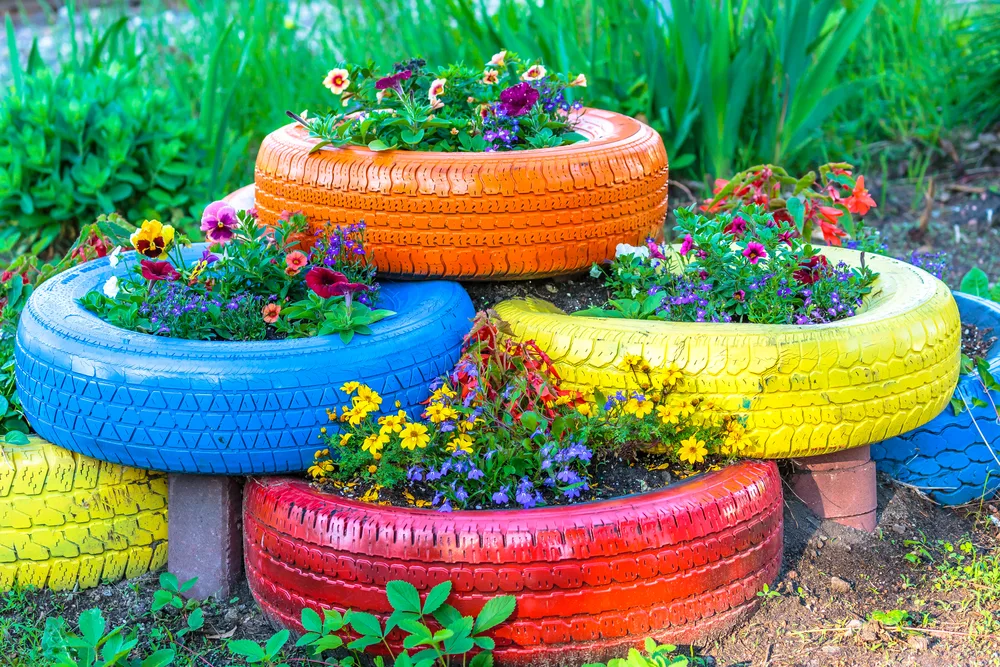
One simple yet effective idea for raised beds is to grow your fruits, vegetables, herbs or flowers in old tyres.
But how about going even further and using rammed earth tyres to create edges for a large raised garden area?
Tyre Gardens @ africanfarming.com
32. Reclaimed Brick Raised Bed
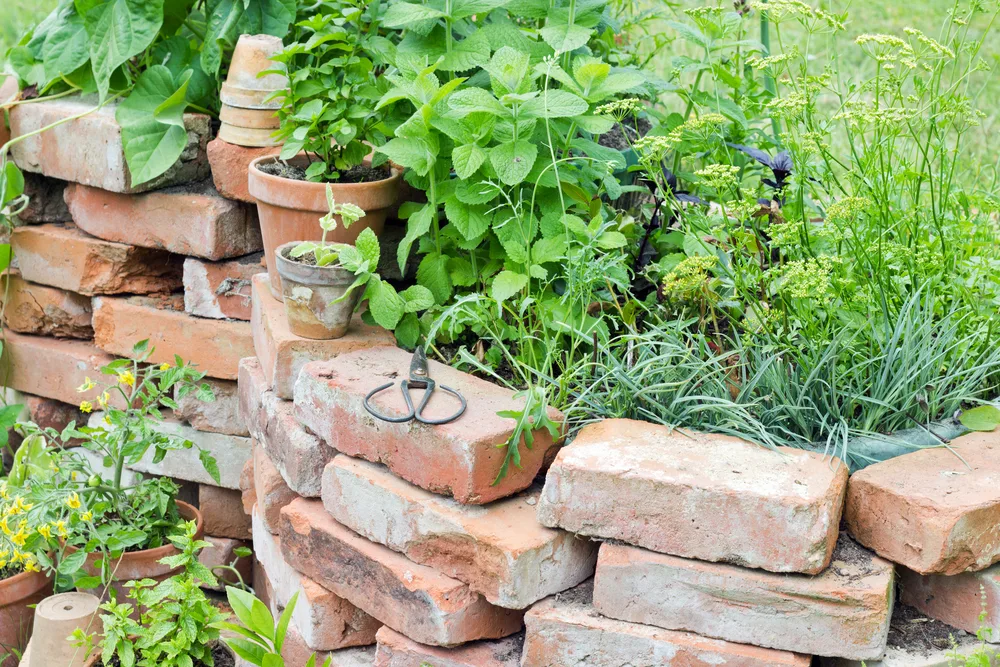
Another simple way to reuse materials that might otherwise be thrown away is by using reclaimed rather than new bricks to make raised bed edges.
Reclaimed brick bed edging can look classic, neat and attractive.
Since you could also paint them, or render them, they could fit in very well in almost any garden.
How to build raised beds from reclaimed bricks @ simplythenest.com
33. Glass Bottle Raised Edging
You could also consider recycling glass bottles in your garden by upcycling them to use them as edging for raised beds.
The simplest way to do so is simply to up-end empty wine bottles and stick them into the ground around your raised beds.
Glass bottle raised edging @ permaculture.co.uk
34. Wine Bottle Raised Garden
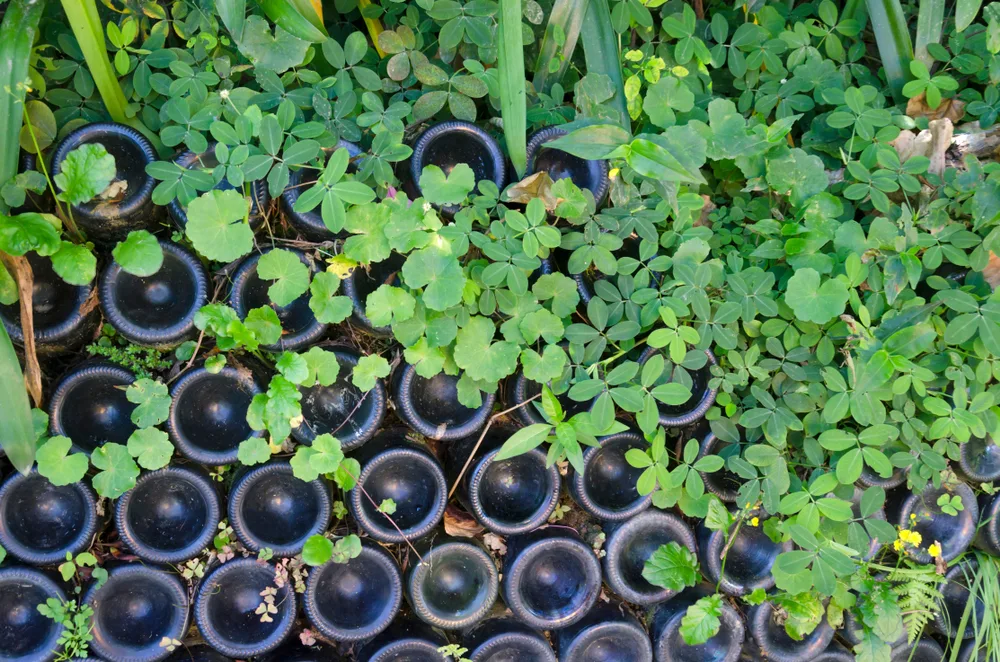
You could also try something a little more elaborate and make a higher raised bed by stacking bottles on their side.
Once held in place with the soil/ growing medium, these could form a sturdy wall for your raised bed structure.
Wine bottle raised garden @ balconygardenweb.com
35. Reclaimed Metal Sheeting Raised Bed
Metal can also look wonderful in your garden. When it has taken on a rusty patina,the russet color can contrast nicely with all the greens.
Reclaimed metal sheeting can be used to create your own custom garden designs, and can really suit an industrial feel garden.
Reclaimed metal sheeting raised bed @ thespruce.com
36. Corrugated Metal Raised Bed
You could also use galvanised corrugated metal sheeting to create a gleaming, modern look for your raised beds.
This can fit well into a range of different garden styles.
Corrugated metal raised beds @ ehow.com
37. Reclaimed Metal Trough Garden Bed
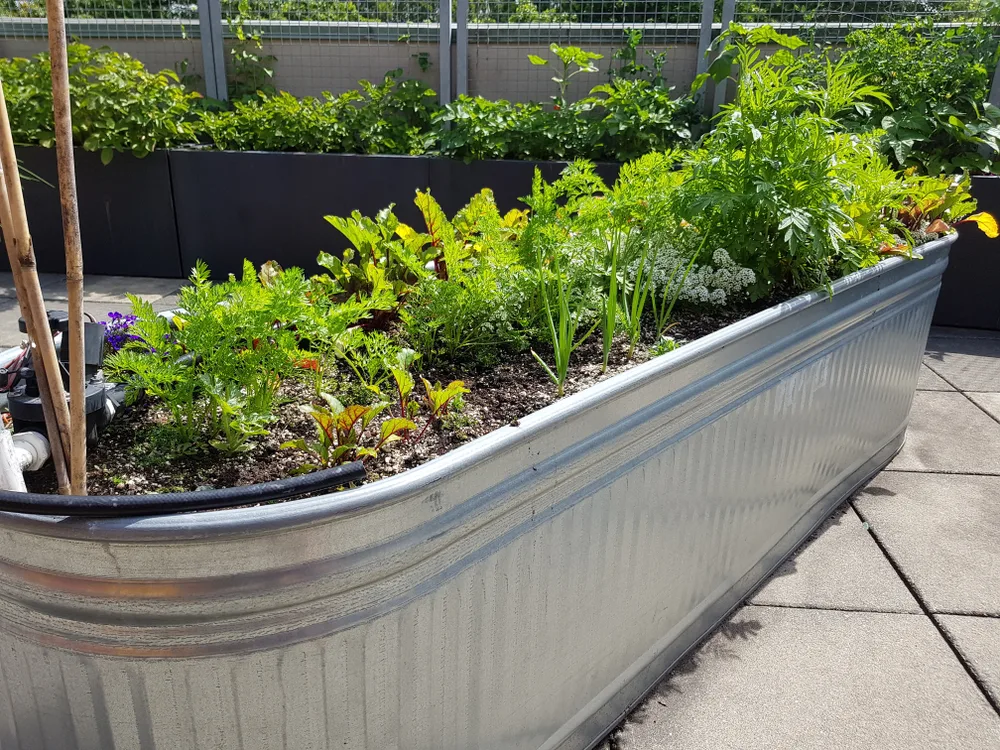
You don’t even need to make your own raised bed edging if you want to incorporate metal into your raised bed or planter plans.
You could also simply source and use metal troughs (like those often used for animal feed).
These can be bought new. But upcycling an old one would be a more environmentally friendly choice.
How to build a cattle trough @ apartmenttherapy.com
38. Reclaimed Concrete Raised Beds
Concrete bed edging is very popular in modern garden design. It can give a sleek, contemporary look, and will last a long time.
Details of how to make a contemporary raised bed can be found below.
But concrete is polluting, and contributes to climate change. So if you want to go greener, choose reclaimed concrete if you can. (Or, better yet, consider sourcing hempcrete or another eco option instead).
How to make a contemporary raised bed @ gardenersworld.com
39. Reclaimed Cinder Block Raised Bed
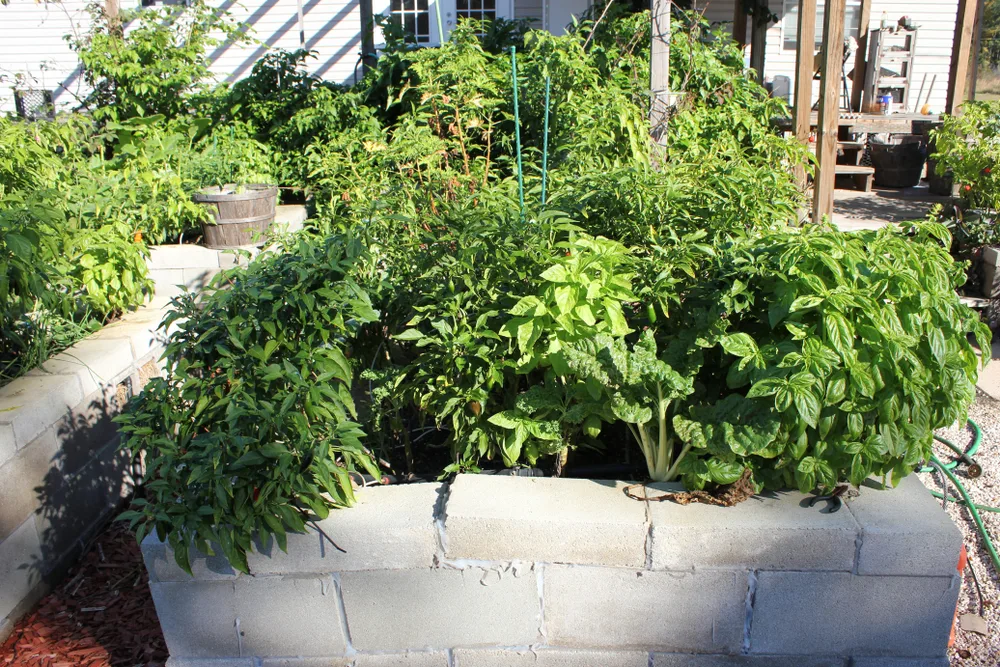
Cinder blocks can be another idea for a raised bed. The benefit of these is that you can not only use them to contain your main growing area, but can also plant up the holes in each block.
(These holes could be perfect for companion herbs and flowers for pollinators, placed around a fruit or vegetable bed, for example.)
Again, try to find and use reclaimed materials, rather than buying new.
Raised garden bed using concrete blocks @ getbusygardening
40. Old Terracotta Pipe Bed Edging
If you liked the idea of the smaller planting holes in the bed edging, but do not want to use concrete cinder blocks, then how about sourcing some old clay pipes to edge your growing areas instead?
This can look beautiful, and this piping can often be sourced cheaply.
Clay pipe planter bed @ lovecreekfarm.com
Additions for a Raised Bed:
By now, you should have a good idea of the methods you will use to make your raised bed, the shape it will take, and the edging materials you will require.
But there are still a few more cool additions for your raised bed that you might want to consider before you start planting up your growing areas.
41. Square Foot Planting Grid
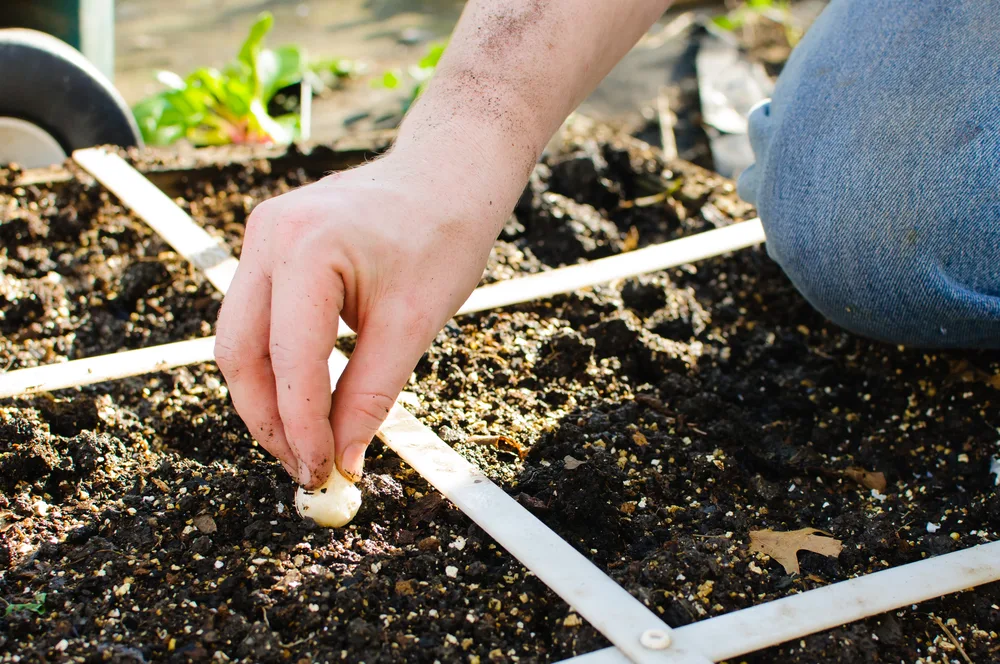
If you would like to adopt a square foot gardening approach then you might want to create a grid to make it easier to see where you should place your plants.
Details of how to create a grid can be found through the link below.
Square foot gardening grids @ doityourself.com
42. A Hoop House/Polytunnel Cover
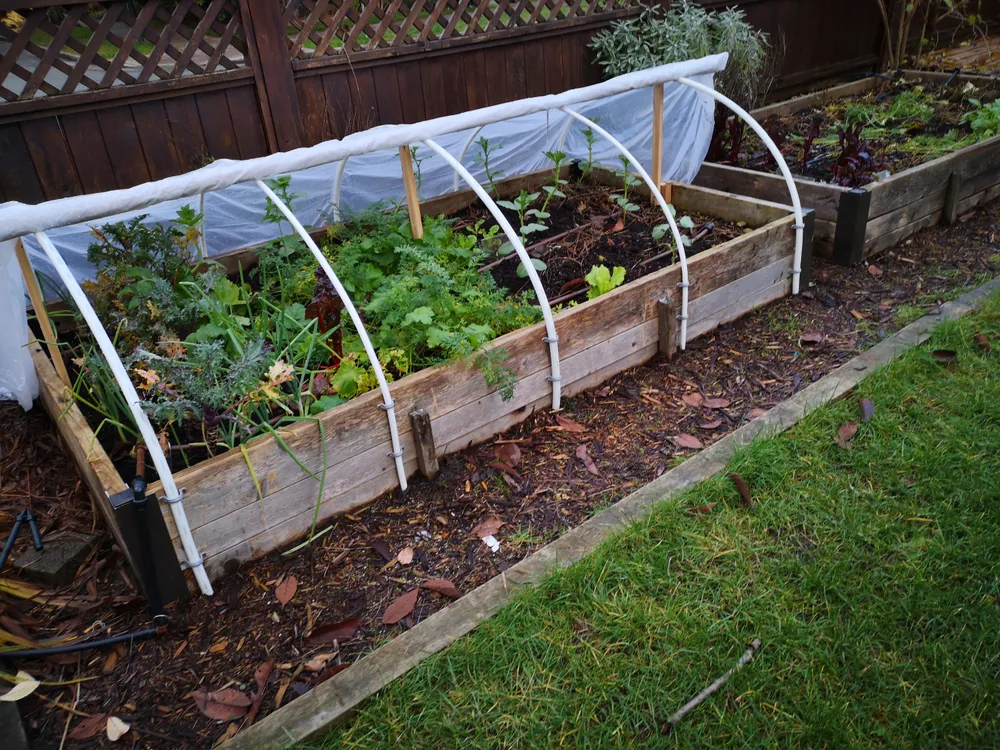
If you want to grow food all year round then creating a polytunnel or hoop house to cover your raised bed could be a good idea.
This cover will help to retain heat, as well as protecting plants from extreme winter weather. It can also help keep pests at bay.
Hoop houses for raised beds @ instructables.com
43. A Mesh Covering/ Fruit Cage
Even if you don’t want to cover your raised bed with plastic, you might want to make a mesh or wire covering for the area, to protect your crops from birds and other pests that might eat everything before you get the chance to.
Making crop protection tunnels for raised beds @ quickcrop.co.uk
44. Trellis for Climbing Plants
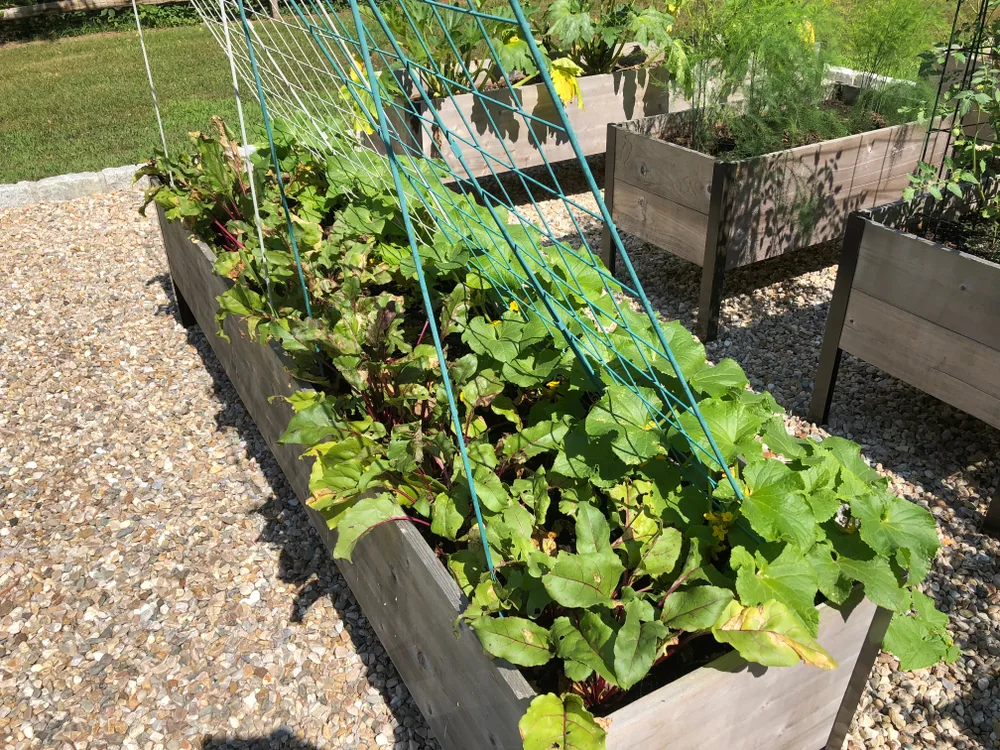
Making the most of your space means thinking vertically as well as horizontally.
Attaching a trellis to your raised bed edge can make it easier to make the most of the space.
It might allow you to grow climbing plants like beans, grapes, or cucumbers, for example.
Raised bed trellis DIY guide @ youtube.com
45. Wood Pallet Squash Frame
This final addition idea is perfect for growing squash or other cucurbits. It is easy and simple to erect and uses reclaimed materials that makes it kind to people and planet.
Add a wooden frame to the top of your raised bed for plants to climb.
Squash growing racks @ thepaintedhinge.com
The ideas above, for the type of raised bed, the shape of growing areas, the materials for bed edging and some cool additions should help you to make sure that you have the best and most productive raised beds in the neighborhood.
Whatever sort of raised growing areas you decide on, you should find it easier now to determine the right direction to go in for your garden.
Ready-Made Raised Bed Solutions
If you don’t have the time or inclination to build your own raised bed, then consider one of these ready-made options instead:

Get the famous Rural Sprout newsletter delivered to your inbox.
Including Sunday musings from our editor, Tracey, as well as “What’s Up Wednesday” our roundup of what’s in season and new article updates and alerts.


